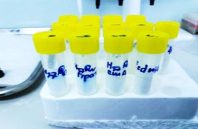A team of physicists from Immanuel Kant Baltic State University (Kaliningrad, Russia) and colleagues used a spectroscopy method to quickly identify single antibiotic-resistant bacteria cells that are the agents of tuberculosis. The method helps find the bacteria and evaluate their resistance to antibiotics without damaging the biological material.
The disease caused by antibiotic-resistant strains of Mycobacterium tuberculosis is the most dangerous. The strains of the Beijing family (named after the city they were first observed in) have also become resistant to many medicinal drugs. Methods of quick identification of drug-resistant bacteria are required both for clinical practice and scientific research.
So the researchers, in collaboration with colleagues from the Saint-Petersburg State Research Institute of Phthisiopulmonology and Saint-Petersburg State University, suggested using Raman scattering spectrography to quickly analyze bacterial cells.

 (585) 768-2513
(585) 768-2513

